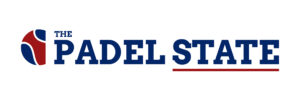Eric Loftus is the head of an award-winning tennis court and athletic track constructor based in New England. But he knows that padel is “about to go pop” here in the U.S., so he has spent the last two years preparing for this explosion.
His company, Cape and Island Tennis and Track, was established in 1972. It has 65 employees and a portfolio of over 3,350 tennis and athletic surfaces at universities, clubs, and schools across the Northeast.
In 2021, Eric attended FSB – a large trade fair for the public space, sports, and leisure industry – in Cologne, Germany. ”Every single booth at that trade show was talking about padel,” he remembers. “I thought, ‘We’ve got to take a look at this.”
Eric spent the ensuing two years setting up Northeast Padel and doing due diligence before taking the plunge into the sport. He has no doubt that padel presents a massive opportunity, despite its U.S. growth being a few years behind the curve of most European countries and the current domination of pickleball at grassroots participation level in the States.
“We see padel as the Formula 1 of racket sports,” he says. “There’s a European sexiness to it which we think is cool, plus the New York Yankees have invested in it. People are going to want to be part of it. Since our company’s conception, we’ve been on the front edge of sports construction and we are ready for the boom.”
The Single Biggest Challenge Facing Padel in the U.S.?
During Eric’s due diligence, he learned that there are European court manufacturers and installers looking to capitalize on the burgeoning American market who don’t necessarily have the right qualifications or quality control.
“If you buy direct, they may fly installers over from Barcelona who are not licensed,” Eric notes. “Our country is very litigious and if someone gets hurt, you’re completely at risk.”
Determined not to compromise his company’s reputation, Eric aims to become the reliable backbone of the padel industry on the east coast. Northeast Padel already has courts in storage and is in the early stages of four projects (three at clubs and one residential) comprising 10 courts in all. They have a network of 20 people helping to identify other potential locations.

“A year ago, I’d have hoped to be a lot further along than we are now, but a year from now I think it’ll be a totally different conversation,” Eric states. “It’s all getting going. I don’t know when that tipping point is going to be, but it’s coming. When it does, we will have boots on the ground to take advantage.”
Eric cites permits as a barrier to growth because local authorities have no concept of what the sport is and are cautious about erecting glass in areas susceptible to hurricanes.
“Nobody over here knows what the heck these things are,” he says. “You send them the structural specifications which are in Spanish and wind loads are calculated differently here than in Europe. Then you mention that you’re pitting 3m of glass against 50-knot winds… so you can understand the skepticism.
“We also don’t have warehouse space in the north east with the necessary ceiling heights. We’re densely populated and these venues aren’t common. We keep hearing the words ‘proof of concept’.
“These are impediments to growth but once it gets normalized and people grow familiar and comfortable, I think we’re going to see some of these issues melt away a bit.
“Everybody is watching cautiously. Not many folks are putting all their chips in yet. I’ve put in some chips for sure – but it’s a fairly easy transition for me because we have all the infrastructure in place.
We’re going to be activating space at shopping malls, town squares, and winter carnivals and leveraging relationships with tennis and country clubs. Padel is permeating and it’s not quite there yet, but it’s coming.”
Why Two Booming Racket Sports Are Better Than One
Pickleball, of course, has already broken into the mainstream, with an estimated six million players in the U.S., turbo-boosted by it being a permitted pursuit under Covid regulations.
Rather than view it as a rival, Eric believes that pickleball and padel can happily co-exist within the general post-Covid racket sports resurgence. And given the rise of U.S. clubs that cater to both pickleball and padel enthusiasts — like Matrix in NW Arkansas, the Parker Racquet Club outside Denver, and the soon-to-be-opened Padel + Pickle Club in St. Louis — he’s certainly not alone in his thinking.

“So many more people now are being exposed to racket sports who may never have before,” he states.
“Some of these folks are going to be really good athletes, and may outgrow pickleball and look for something a little bit more competitive and complex. I think padel will be a great answer to that. At the end of the day, a rising tide lifts all boats, and we are very excited to see the boom across all sectors.”
A version of this article was originally written by Mike Dale for The Padel Paper on September 29, 2023. It has been modified and updated.













